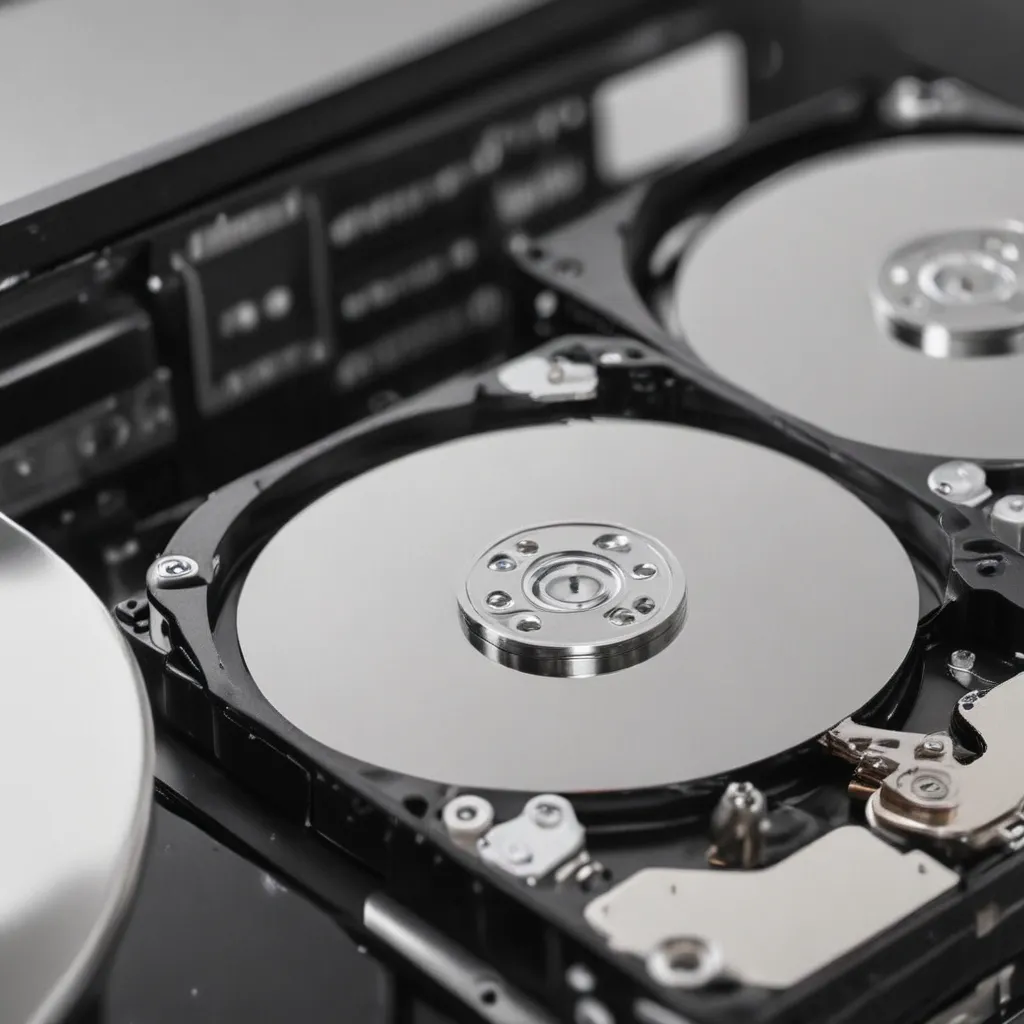The Importance of Hard Drive Cloning for Your Business
As a small business owner in the UK, I know how vital it is to have a reliable data management strategy. After all, the lifeblood of any modern company is the information stored on its computers. That’s why I’m a firm believer in the power of hard drive cloning. It’s not just a nifty tech trick – it’s a critical tool for ensuring business continuity in the face of unexpected disasters.
Imagine this: You’re in the middle of a big client presentation when suddenly, your computer freezes up. You frantically try to reboot, but to no avail. Your heart sinks as you realize your hard drive has crashed, taking all your important files and documents with it. That’s a nightmare scenario for any business owner, but it’s one that can be easily avoided with the right precautions.
That’s where hard drive cloning comes in. By creating an exact duplicate of your primary hard drive, you’re essentially giving your business a safety net. If disaster strikes and your main system goes down, you can simply swap in the cloned drive and carry on as usual. No more frantic data recovery efforts or lost productivity – just a seamless transition to your backup. [1]
The Anatomy of a Hard Drive Clone
But how does this cloning process actually work? Well, it’s a bit more sophisticated than your average data backup. Hard drive cloning doesn’t just copy files – it captures the entire system configuration, including the operating system, installed programs, and even hidden partitions. [1]
The process involves connecting your source hard drive (the one you want to clone) to a specialized cloning device, such as an IDE/SATA duplicator. [6] This device then creates a bit-for-bit copy of the source drive onto the target drive, ensuring that every single byte of data is replicated with 100% accuracy.
It’s a meticulous process, to be sure, but the end result is a perfect mirror image of your original hard drive. And the best part? You can swap out the cloned drive in a matter of minutes, getting your system up and running again in no time.
Choosing the Right Cloning Solution
Of course, not all hard drive cloning solutions are created equal. As with any technology, there are a variety of options to consider, each with its own unique features and capabilities. [2][3][4]
For example, some cloning software, like Acronis True Image, allow you to clone your drive to a larger or smaller target drive, making it easy to upgrade to a larger hard drive or fit your backup on a more compact SSD. [4] Other solutions, like the IDE/SATA duplicators mentioned earlier, are dedicated hardware devices that can handle multiple drives at once, perfect for businesses with multiple computer systems to manage. [6]
When evaluating cloning solutions, it’s important to consider factors like ease of use, compatibility with your existing hardware and software, and of course, the overall cost. After all, you want a solution that’s not only effective, but also fits within your budget as a small business owner.
Implementing a Foolproof Cloning Routine
Now, you might be thinking, “Okay, I get the importance of hard drive cloning, but how do I actually put it into practice?” Well, I’m here to tell you that it’s a lot simpler than you might think.
The key is to establish a regular cloning routine as part of your overall data backup and disaster recovery plan. [5] This could mean cloning your main drive once a week, or even more frequently if you’re dealing with a high volume of critical data.
And the best part? You don’t even have to do it all yourself. Many cloning solutions, like the aforementioned Acronis True Image, can be set to run automatically on a schedule, ensuring that your backup is always up-to-date without you having to lift a finger. [2]
Of course, you’ll want to make sure you have a secure, off-site storage solution for your cloned drives, just in case disaster strikes your primary location. But with a little planning and the right cloning tools, you can rest easy knowing that your business data is safe and sound.
Cloning for the Win
At the end of the day, hard drive cloning is one of the most powerful tools in a small business owner’s arsenal. It’s not just about data backup – it’s about ensuring that your business can weather any storm, from hardware failures to ransomware attacks. [7][8]
So, if you’re ready to take your data management strategy to the next level, I highly recommend exploring the world of hard drive cloning. Trust me, your future self (and your clients) will thank you.
References
[1] Media Duplication Systems. (n.d.). Clone Hard Drive: Erasing Devices. Retrieved from https://www.mediaduplicationsystems.com/clone-hard-drive-erasing-devices/
[2] Acronis. (n.d.). Unable to Clone Windows 10 Disk. Retrieved from https://forum.acronis.com/forum/acronis-true-image-2016-forum/unable-clone-windows-10-disk
[3] Acronis. (2021). System Clone vs. Disk Clone. Retrieved from https://www.acronis.com/en-us/blog/posts/system-clone-vs-disk-clone/
[4] Acronis. (n.d.). Cloning Larger or Smaller Disks. Retrieved from https://forum.acronis.com/forum/acronis-true-image-2020-forum/acronis-2020-true-image-cloning-larger-smaller-disks
[5] Google Cloud. (n.d.). Persistent Disk. Retrieved from https://cloud.google.com/persistent-disk
[6] iDISK Home. (n.d.). IDE/SATA Duplicators. Retrieved from https://www.idiskhome.com/main/product_server.shtml
[7] Server Fault. (2008). Using dd for Disk Cloning. Retrieved from https://serverfault.com/questions/4906/using-dd-for-disk-cloning
[8] Super User. (2018). Unable to Boot Windows 10 After Cloning to SSD. Retrieved from https://superuser.com/questions/1290536/unable-to-boot-windows-10-after-cloning-to-ssd













